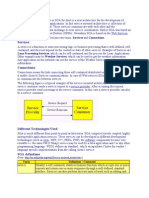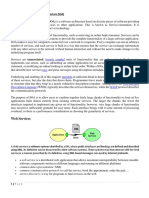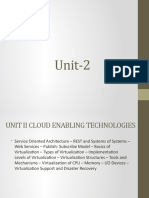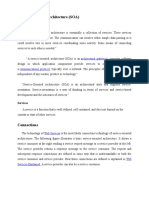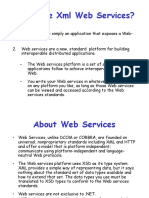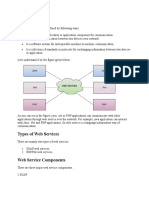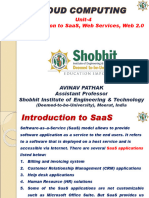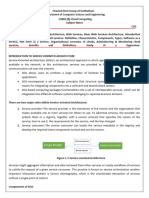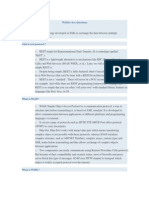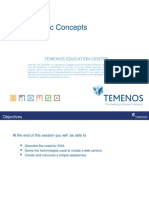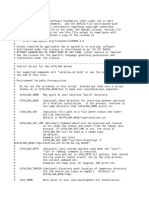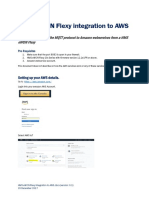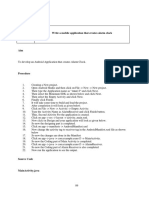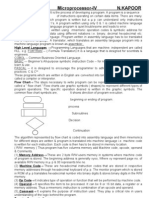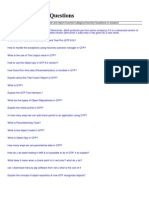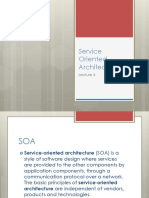0% found this document useful (0 votes)
42 views25 pagesSOA WebServices Word
Web services are technologies that allow connections between different applications and systems. A web service is a software application identified by a URI that can be accessed over the internet. Services are connected together using web services technologies like SOAP, WSDL, and UDDI. When services from different systems or organizations are combined, it forms a service-oriented architecture (SOA).
Uploaded by
iancarl.jabloCopyright
© © All Rights Reserved
We take content rights seriously. If you suspect this is your content, claim it here.
Available Formats
Download as DOCX, PDF, TXT or read online on Scribd
0% found this document useful (0 votes)
42 views25 pagesSOA WebServices Word
Web services are technologies that allow connections between different applications and systems. A web service is a software application identified by a URI that can be accessed over the internet. Services are connected together using web services technologies like SOAP, WSDL, and UDDI. When services from different systems or organizations are combined, it forms a service-oriented architecture (SOA).
Uploaded by
iancarl.jabloCopyright
© © All Rights Reserved
We take content rights seriously. If you suspect this is your content, claim it here.
Available Formats
Download as DOCX, PDF, TXT or read online on Scribd
/ 25

